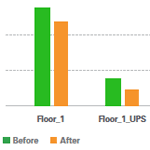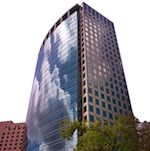 In an interview with Environmental Leader, Greg Peterson, manager of global energy and environment for IBM, discusses how his team uses big data analysis to achieve a 3.5% annual energy conservation.
In an interview with Environmental Leader, Greg Peterson, manager of global energy and environment for IBM, discusses how his team uses big data analysis to achieve a 3.5% annual energy conservation.
Peterson mentioned Vigilent as one of the systems that help IBM achieve its ambitious goals:
A product we purchased, Vigilent Dynamic Cooling Management System, is similar to the chiller optimization. We put temperature sensors through the data center. Then we put controllers on the CRAC units. So we feed all this information back to the central piece of software that’s cognitive and it controls the CRAC units.
If you’ve ever been to a data center, some areas are warmer and have more equipment than others. Typically you overcool the data center because there’s a hot spot somewhere. In these data centers it can be 70 to 72 degrees. You’re wasting energy.
[The management system] puts cooling where it’s needed. In areas that require very little cooling, the CRACs can back down or even turn themselves off. [The system] is learning as it goes, figuring out which CRACs are supplying what areas of the data center. It’s not intuitive. You would think a CRAC would supply the area right around it, but it doesn’t necessarily work that way. [The system] creates influence maps showing where the CRACs are actually cooling. We see the cooling energy go way down — many times cut by over 50%. Those are big numbers. We’re implementing this in all of our data centers worldwide.



